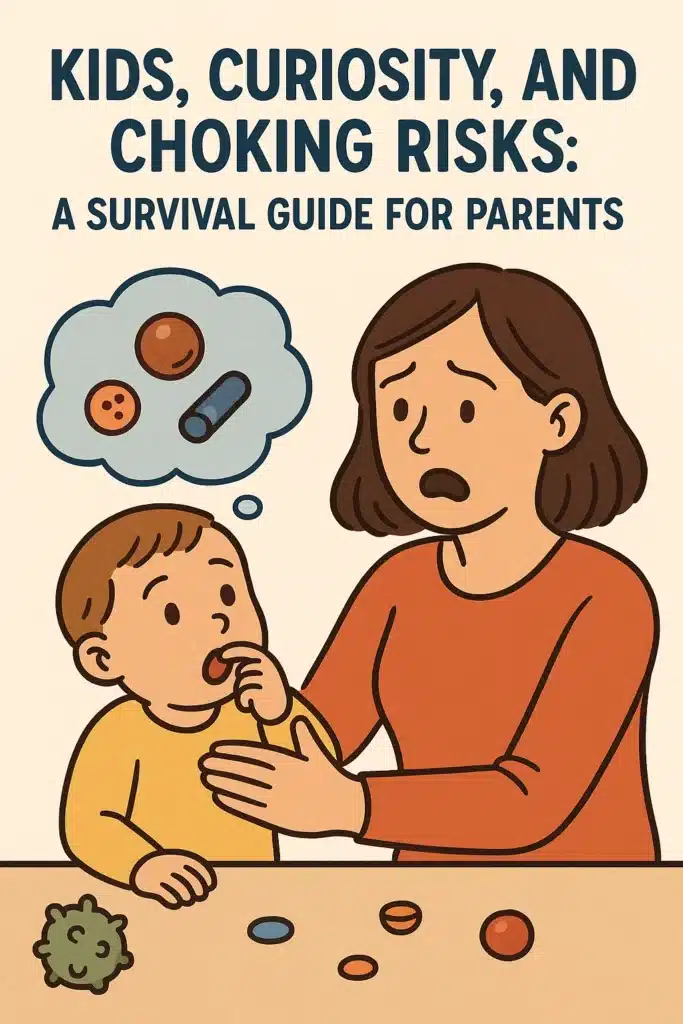If there’s one thing every parent knows, it’s that kids are naturally curious. Their tiny hands grab, their mouths explore, and before you know it, something that should not be swallowed has gone straight in. While curiosity is part of learning and growth, it also puts children at risk of choking—a situation that can be frightening and sometimes life-threatening.
At CLIO Mother and Child Institute, we often meet parents who have faced such emergencies. The good news is, with awareness, prevention, and some basic life-saving knowledge, parents can significantly reduce the risks. Let’s walk through what you need to know.
Why Are Kids More Prone to Choking?
- Small airways: Children, especially toddlers, have narrower windpipes, making them more vulnerable.
- Exploring through the mouth: It’s how they learn about texture, taste, and size.
- Inexperience with chewing: Young kids may not chew food thoroughly before swallowing.
- Lack of awareness: They don’t always recognize danger, which means anything small and shiny looks like “fun.”
Common Choking Hazards in Kids
Choking doesn’t always come from what we expect. Some of the most common culprits include:
- Foods: Grapes, popcorn, nuts, hard candies, hotdogs, raw carrots.
- Household items: Coins, buttons, batteries, marbles, pen caps.
- Toys: Small detachable parts, beads, building blocks.
As a general rule, anything that can pass through a cardboard toilet paper roll poses a choking hazard to children younger than three.
Prevention: The Best First Step
While accidents happen, prevention can make all the difference. Here are some realistic tips:
- Supervise meals
When eating, encourage your kid to sit down; choking is more likely when they run, laugh, or lie down.
- Modify food
- Cut grapes, cherry tomatoes, and sausages into quarters.
- Shred raw veggies instead of serving in chunks.
- Avoid whole nuts for kids under 5.
- Cut grapes, cherry tomatoes, and sausages into quarters.
- Check toys
Follow age recommendations on toy packaging. Regularly inspect toys for loose or broken parts. - Keep small items out of reach
Create a “tiny objects” rule at home—anything smaller than a ping pong ball stays away from your child’s play area. - Teach safe habits
As children grow, explain why they shouldn’t put random objects in their mouths.
What To Do If Your Child is Choking
This is where staying calm and knowing the basics matters most.
Step 1: Identify the Situation
- Mild choking: The child can breathe somewhat or coughs loudly and makes noises. Coughing indicates that air is still flowing, so encourage them to continue.
- Severe choking: The child becomes blue, stops talking, crying, or breathing, and becomes quiet. An emergency has arisen.
Step 2: Act Quickly
- For infants (under 1 year):
- Lay the baby face down on your forearm.
- Between the shoulder blades, deliver five hard strikes to the back.
- Turn them face up and give them five chest thrusts with two fingers if the thing doesn’t come out.
- Lay the baby face down on your forearm.
- For children (over 1 year):
- To do the Heimlich technique, position your fist right over the child’s belly button while standing behind them. Immediately shove upward and inward until the thing is ejected.
- To do the Heimlich technique, position your fist right over the child’s belly button while standing behind them. Immediately shove upward and inward until the thing is ejected.
Step 3: Call for Help
If the child doesn’t respond or becomes unconscious, call emergency services immediately and begin CPR if trained.
Staying Prepared as a Parent
Emergencies don’t announce themselves. Here are some proactive steps to feel more confident:
- Take a first-aid/CPR course—a must for all parents and caregivers.
- Keep emergency numbers handy—save them on your phone and stick them on the fridge.
- Stay calm—panicking delays action. Practicing the steps beforehand helps reduce fear in real situations.
The Silver Lining
Parenting is a mix of joy, worry, and endless surprises. While we cannot bubble-wrap our kids or stop their curiosity, we can channel it safely. By being mindful of choking hazards and learning how to act in emergencies, you’re not just preventing accidents—you’re creating a safer environment where your child can explore, learn, and grow.
At CLIO Mother and Child Institute, our experts encourage every parent to be informed, prepared, and proactive. Because when it comes to kids, safety isn’t about restricting curiosity—it’s about guiding it wisely.
Takeaway for Parents:
- Supervise kids during meals and play.
- Modify food and avoid risky items.
- Learn first aid and choking response.
Your calm planning can make all the difference, and your prompt action can save a life.


